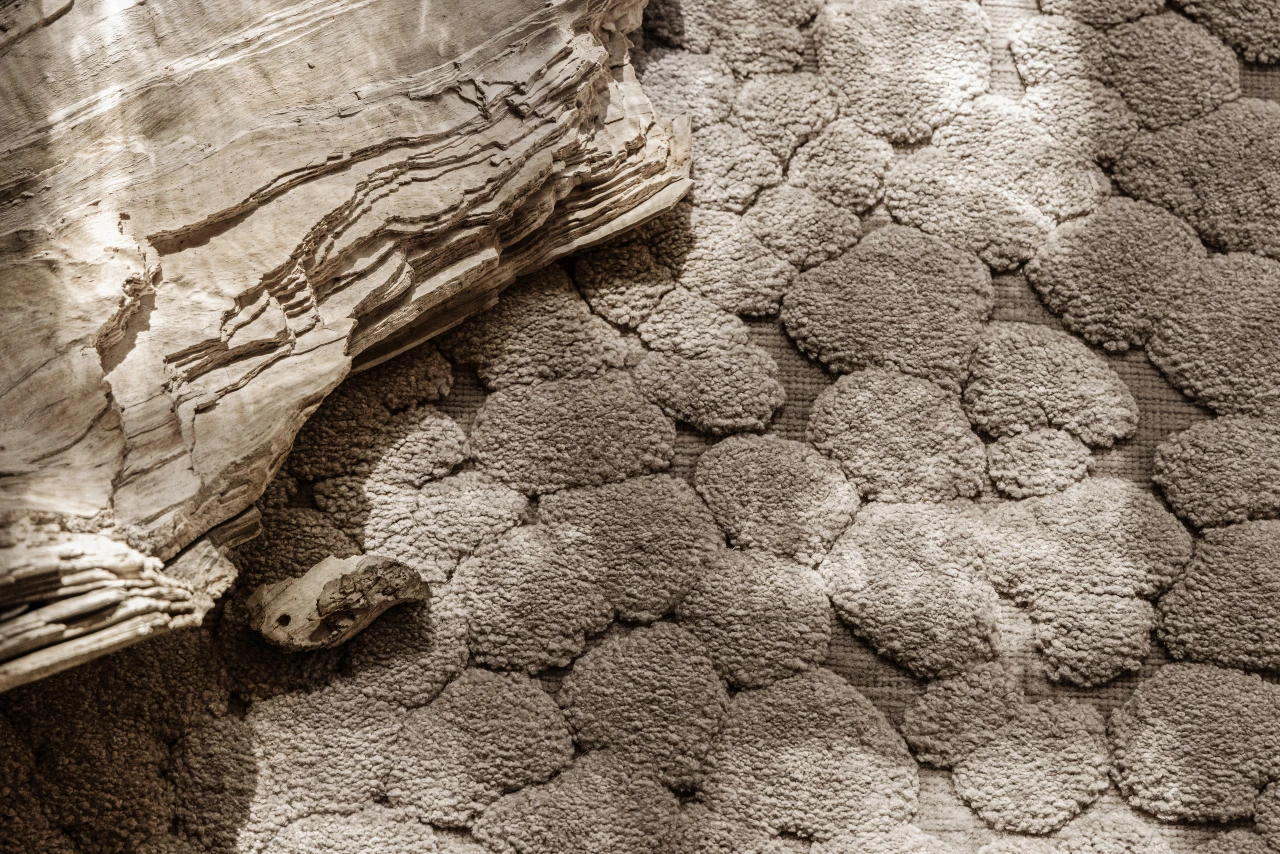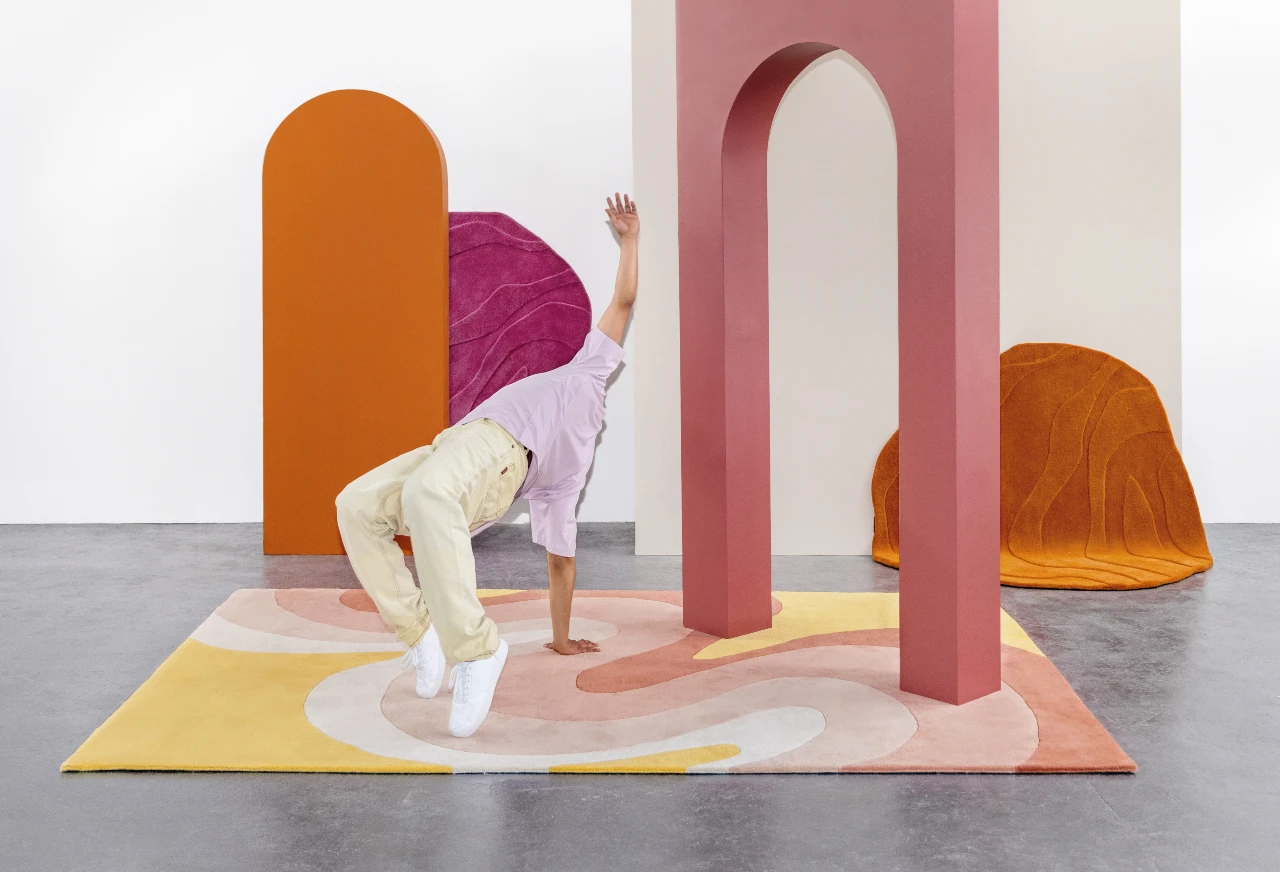Materials

Recycled or other sustainable materials
We set high demands on our materials as they are crucial for the appearance, quality, function, and life span of our rugs. It is also in the choice of material that we can make a difference. We have therefore set a goal that by 2030, 80 percent of the materials used in our rugs will be reused, recycled, or otherwise sustainable.
Our promise of sustainable materials
All materials have their own challenges in terms of durability and quality, but with our promise that 80% of the materials in our rugs will be sustainable by 2030, we put great focus on continuously increasing the proportion of recycled materials. We also evaluate and bring in alternative materials that in various ways are sustainable.
We constantly work to set clear goals for the use of sustainable materials and to educate and encourage our employees to think sustainably – both in design and purchasing.
Life span is a key
Our rugs are designed to be used for many years – some materials last for generations. Provided that this is observed or that the rugs are reused and given a new life in new homes, life span is an important key in our sustainability work. With long lasting qualitative materials, we want to prevent rugs from becoming a wear-and-tear product with a negative impact on the environment.
These are the main materials used in our rugs:
NATURAL VIRGIN FIBERS
Wool
A naturally renewable material, also being one of the best materials from a durability point of view. The lifespan of a wool rug can extend over several generations which gives a lower environmental impact than many other materials considering its full life cycle. Wool is also biodegradable and readily recyclable. The material properties of wool help retain the original shape of the rug and is also naturally dirt-repellent which also contributes to extending the life of these rugs.
Cotton
Cotton is a natural, renewable, biodegradable fiber. It comes from the cotton bush that thrives in a warm climate. To grow, however, the cotton bush needs a lot of sun and water and therefore irrigation is often required. Large amounts of water are also used in dyeing and preparation. Rugvista offers a wide selection of cotton rugs, and it’s also used widely in the warp of our rugs.
Jute
Jute is a subtropical plant with soft, shiny plant fiber that can be spun into rough, strong threads. Jute rugs have a long lifespan and is a natural recyclable material. Jute is being used in both the pile and the warp of our rugs.
Silk
Silk is a natural fiber that comes from butterfly larvae and is one of the strongest natural fibers available. Silk is used to emphasize details in wool rugs and in more exclusive rugs. The pile and even the warp can be made by silk. Silk is a completely natural material and thus recyclable.
Viscose
Viscose is an artificial fiber that resembles silk and is based on natural materials such as cotton or cellulose. It is a renewable material which is good from a sustainability point of view. However, viscose is a fiber where a relatively high amount of chemicals is used but has potential through sustainable production of raw materials and increased use of recycled fibers.PETROLEUM
BASED VIRGIN FIBERS
Polyester
A synthetic fiber most often derived from petroleum and well-known for its long lasting and easy-to-clean qualities, making it a suitable material for rugs. One of the big concerns with polyester used in textiles is the shedding of micro plastics into the water when being washed. With the user-phase deferring between different sectors within the textile industry, it’s a much smaller issue for the rug industry compared to, for example, apparel. Instead, the focus to reduce the use of conventional polyester in rugs are due to the negative environmental impacts from the production processes by being made from a non-renewable resource using
an energy-intensive process.
Polypropylene
Polypropylene is like polyester, a synthetic fiber derived from petroleum but with its source material coming from propylene gas, a bi-product of oil and natural gas production. It’s commonly used in machine-woven rugs due to its appreciated characteristics such as being fade- and stain-resistant and giving a nice luster to the rug.
Vinyl
PVC or vinyl is usually produced from sodium chloride, oil, or natural gas. Our vinyl rugs are made of Swedish phthalate-free vinyl with high UV resistance and are approved according to REACH and ROHS. The material has a very long service life, which in the long run gives a low environmental impact.
RECYCLED FIBERS
Recycled polyester
A great substitute to conventional polyester, recycled polyester is mainly produced from worn-out and recycled PET bottles. By using recycled polyester plastic waste is prevented from ending up in landfills at the same time as it cuts out the fossil fuel industry. With the same qualities as conventional polyester it’s well suited for rugs giving it a soft and comfortable feel.
Recycled cotton
Recycled cotton is made from textile residues from production, or from post-consumer textile waste. It’s mechanically recycled, grounded into fibers, spun into new yarns, and made into new fabrics. By using recycled cotton, the water, chemical & energy intense process of producing virgin cotton is avoided and its environmental impact is drastically reduced*. In 2022 we launched our first printed rug collection made of more than 80% recycled cotton certified by the Global Recycled Standard.
*Higg Material Sustainability Index https://apparelcoalition.org/higg-product-tools/
Product and material standards
Product safety and material standards are important aspects to work towards a more sustainable industry. All suppliers must sign our supplier agreement, where it is stated that they are obliged to comply with our quality, chemical and safety requirements. We constantly work to ensure that our suppliers handle chemicals in a safe and correct manner when manufacturing the rugs and constantly evaluate and conduct product risk assessment with the precautionary principle in mind. The suppliers are testing the rugs regularly to verify that they comply with the chemical requirements, and we conduct regular third-party tests at accredited laboratories, as well as perform spot checks during production. We are also regularly evaluating relevant material standards that we believe can help move the industry to a sustainable future. Here you can read more about organizations and standards we currently rely on:
RISE Chemicals Group
Rugvista is a member of RISE Chemicals Group, a Swedish network that give recommendations on chemical and environmental issues. All Rugvista suppliers must sign a written agreement that they comply with the Chemicals Group’s Chemical Restriction List, which complies with EU legislation (REACH, BPR and EU waste legislation) and international chemicals legislation (POPS). We strive to remain up to-date on the latest developments through our collaboration with RISE Chemicals Group.
OEKO-TEX®
All machine-made rugs from Turkey are certified according to STANDARD 100 by OEKO-TEX®, which means that the product meets high human ecological requirements, i.e., does not contain chemicals that are harmful to health. The certification means that chemicals in products must not exceed legally established limits, must not contain prohibited substances or other substances that have been scientifically proven or that are suspected of having negative health effects.
GRS
The Global Recycled Standard (GRS) is a voluntary product standard that verifies and tracks recycled raw materials through the supply chain. It also includes processing criteria to prevent the use of potentially hazardous chemicals and verifies positive social or environmental production at the facilities. It’s developed by the global well-known organization Textile Exchange. Currently a selection of our suppliers in Turkey apply this standard for products made from recycled materials. We endeavor to use it for all recycled fibers.
Packaging
All rugs are packaged before being sent to the customer to be protected against damage. For us, it is important to reduce the amount of packaging and its impact on the environment. Therefore, we have set a goal that all our packaging must be made of circular or sustainable material by 2025.
